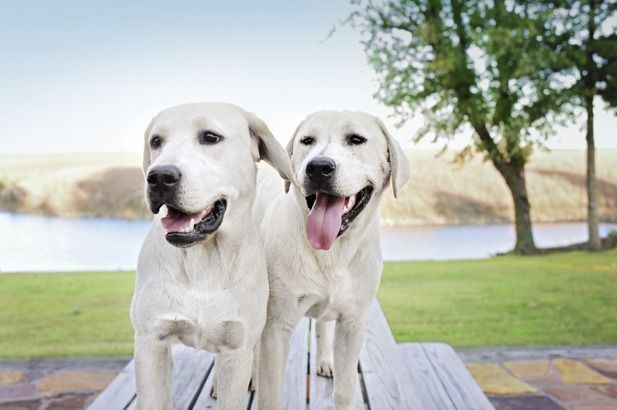Introduction
From small teacup Chihuahuas to enormous and regal Mastiffs, dogs come in an amazing variety of sizes and shapes. Large dog breeds distinguish out among the wide variety of canine companions as strong, imposing, and frequently incredibly gentle.
The weight range of huge dog breeds, the causes affecting their size, the distinctive traits that make them so adored, and how to assure their well-being via adequate care will all be covered in this extensive article.
Knowledge about Large Dog Breeds
The size and weight of large dog breeds are frequently used to identify them. Although there isn’t a clear definition of what a “large” breed is, dogs who weigh more than 50 pounds (22.7 kilograms) are sometimes categorized as large. Some breeds, meanwhile, can weigh a lot more, reaching weights of over 100 pounds (45.4 kilograms) or even 200 pounds (90.7 kilograms).
Size-Influencing Factors
Numerous elements, including genetics, breeding techniques, and diet, have an impact on a dog’s size, including giant breeds. Here are some crucial things to remember:
- Genetics: A dog’s genetic makeup is the main determinant of its size. Large dog breeds are developed from parents with larger genes, and over several generations, specific features are deliberately bred to produce the desired size.
- Breeding Techniques: Good breeders are essential to upholding breed standards, which include size. To create dogs with the proper size and shape, they carefully choose breeding pairs.
- nourishment: A dog’s growth and development depend heavily on proper nourishment. Large-breed puppies can need special diets to promote healthy growth and lower the risk of orthopedic problems.
- A dog’s general health and exercise routine can have an impact on its size. A dog is more likely to reach its genetic growth potential if it gets the right amount of exercise and keeps a healthy weight.
Weight Variations Among Large Dog Breeds
There are many different sizes of large dog breeds, and they can weigh a lot of different things. Following are some illustrations of huge dog breeds and the weight ranges for each:
- Great Dane: One of the biggest canine breeds and known as the “gentle giant,” Great Danes are enormous. They are capable of weighing at least 140 to 175 pounds (63.5 to 79.4 kg).
- Saint Bernard: The huge size and kind demeanor of Saint Bernards are well known. Typically, they weigh between 63.5 and 81.6 kilos, or 140 and 180 pounds.
- Newfoundland: Weighing between 100 and 150 pounds (45.4 and 68 kg), Newfoundlands are sturdy, powerful canines.
- Irish Wolfhound: These graceful canines can weigh impressively between 63.5 and 81.6 kilograms (140 to 180 pounds) or more.
Mastiffs are among the biggest dog breeds; some can reach weights of up to 230 pounds (104.3 kilograms) or more.
- Leonberger: These affable dogs, whose weight ranges from 100 to 170 pounds (45.4 to 77.1 kilograms), are renowned for their outgoing personalities.
Large breeds’ distinctive traits
Large dog breeds differ from one another due to particular traits they possess:
- Gentle Giants: A lot of big breeds are renowned for being kind and friendly. They are great family pets since they frequently have placid temperaments.
- Strength and Agility: Large breeds can be very athletic and agile despite their size. Some are employed in jobs like search and rescue or as farmworkers.
- specialist Care: Due to their size and propensity for specific health conditions, such as joint problems, large dogs frequently need specialist care. It’s crucial to offer a balanced diet, regular exercise, and adequate grooming.
- Lifespan: In comparison to lesser breeds, large dog breeds typically have shorter lives. Owners must be ready for age-related health issues that can arise.
Maintenance of Large Dog Breeds
Several factors need to be taken into account when caring for giant dog breeds to ensure their wellbeing:
- Nutrition: Provide a high-quality, balanced feed that is suitable for your huge dog’s size and age. To choose the ideal diet, speak with a veterinarian.
- Exercise: Keep your giant dog physically and mentally occupied by giving him regular exercise. However, be aware of any potential restrictions and their particular workout requirements.
- Veterinary care: Keeping track of your dog’s health and preventing any problems before they arise requires routine veterinary examinations.
- Grooming: To avoid matting and skin problems, many large breeds’ thick coats call for routine grooming.
Conclusion
Many dog lovers have a soft spot in their hearts for large dog breeds because of their astounding size and variety of traits.
These breeds, which range from gentle giants like Great Danes to magnificent Saint Bernards, each have distinctive characteristics that make them cherished friends.
These wonderful canines can have long, healthy lives with their human families if owners are aware of the variables that affect their size, their unique demands, and how to take good care of them.
